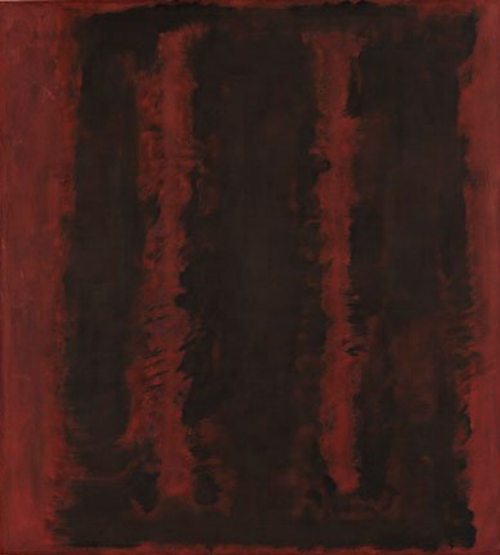The Odd Couple: What Warhol and Basquiat Teach Us About Collaboration
Andy: We’re very different…You’re all spontaneous and wild and so deep and mystical… and I’m still a commercial illustrator really, a photographer, obsessed with the surface of things.
I recently enjoyed ‘The Collaboration’, a play by Anthony McCarten that explores the period in the mid-1980s when artists Andy Warhol and Jean-Michel Basquiat worked together.
We open in a New York gallery. Swiss art dealer Bruno Bischofberger is expressing to Warhol his concern that the output of the celebrated master of Pop Art is becoming rather familiar.
Bruno: I mean all the brand names, the icons, reinterpreting things we see or use everyday. Everything silkscreened. As great as they are, they’re expected from you now. Forgive me, but when was the last time you picked up a brush and actually painted?
The ageing Warhol has not been focusing on his work. Rather he has been hanging out at Studio 54, partying with aristocrats, models, actors and rock stars. Bischofberger proposes a collaboration with hot young talent, Basquiat.
Bruno: It might be good for you, Andy. You can learn a lot from the young.
In the next scene Bischofberger puts the idea of a collaboration to a sceptical Basquiat.
Bruno: This could be incredible for you, Jean. Your name linked, as equals, with the most famous living painter in the world.
Jean: Is he living?
At length Warhol and Basquiat are persuaded. They begin work together, hesitantly at first.
Warhol is cool, cautious and considered. Basquiat is daring, instinctive, fluid. Warhol sets up his tracing projector machine and sketches the outline of the General Electric logo. Basquiat adds bold blocks of colour, enigmatic scrawls and a smiling figure with its arms in the air.
As they apply themselves to the task, they discuss their differing views of art.
Warhol explains his fascination with commerce.
Andy: One of the things I hope history will remember me for, if there’s any justice, is that I’ve broken down the walls between business and art. Business is art, it’s the best art. And art has always been business. It’s all commerce now.
Warhol also rebuts the criticism that his work lacks passion.
Andy: I am commentating. In a neutral way. No one ever gets this, but I’m trying to make art that forces you to ignore it…the same way we’re ignoring life.
Basquiat, by contrast, believes that the best art has mystical properties.
Jean: Paintings can have supernatural power if you imbue them with them. These symbols, these images. Wherever they come from, they have a power. They’re like… incantations.
He suggests that art should have meaning and purpose.
Jean: Art should disturb the comfortable…comfort the disturbed.
Inevitably, with such contrasting opinions on their craft, there are occasional flashpoints.
Andy: I make beautiful things. Carefully. Very carefully. I produce out of what I see.
Jean: ‘Produce’? You re-produce.
Nonetheless the Odd Couple work well together. Despite their differences, or perhaps because of them, they gain energy and inspiration from each other. They revel in the exchange of ideas and approaches. They enjoy the challenge.
Eventually Warhol picks up his brush again and paints.
Andy Warhol and Jean-Michel Basquiat, Untitled (General Electric II)
acrylic, oil pastel and silkscreen ink on canvas
Looking back on this collaboration that took place nearly 40 years ago, one can’t help but be struck by the chasm in age, career stage, style and perspective. Warhol was world famous, but stuck in a rut. Basquiat was in the ascendant, but with a lot to learn. Warhol was concerned with brands, media and fame; with surface and repetition. His work was aloof and distant. Basquiat’s art was populated by skeletons and skulls, masks and symbols. It was vibrant, dreamlike and magical.
Jean: Don’t you need a new challenge? You can’t just screenprint your life away.
Perhaps in the world of commercial creativity we should spend more time plotting irregular collaborations. Successful team alchemy is not just a matter of putting together like-minded soul mates. It is achieved by combining diverse skillsets, temperaments and outlooks; by creating the conditions for provocation and exchange, discovery and inspiration.
By the end of the play Warhol and Basquiat have produced enough paintings together to fill the Tony Shafrazi Gallery. Bischofberger is satisfied. It’s time to move on.
Andy: I think we’re done. Don’t you? Let’s just say we are. That’s the great thing about contemporary art – who can fucken tell?
'We came the long way,
And I thought you knew,
It was the long way.
My darling, I thought you knew.
We came the long way.
So don't break my heart.
We been through the desert
Where no water flows.
We've walked streets and highways
Where kung fu is afraid to go.
It was the long way.’
Junior Byles, ‘It Was a Long Way’ (W Boswell / J Byles)
No. 363











